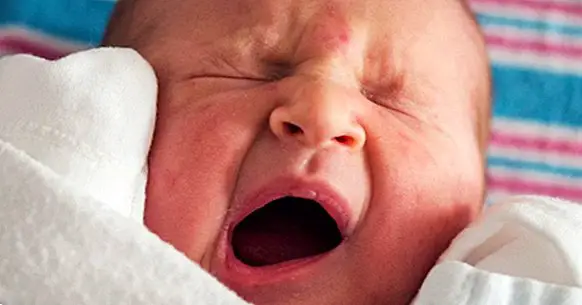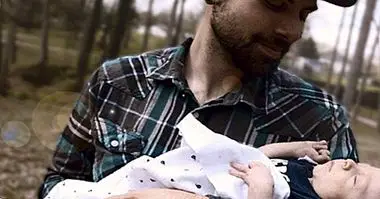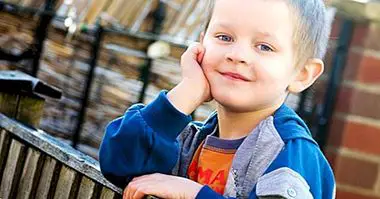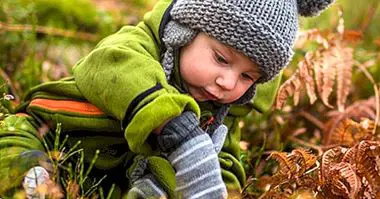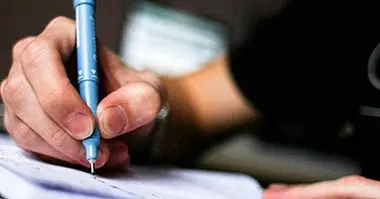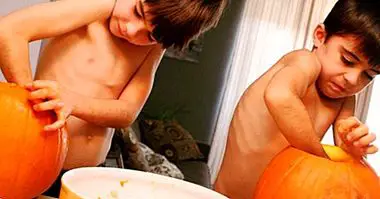The 12 primitive reflexes of babies
Throughout our development as a species human beings have acquired reflexes, behaviors that depend on the central nervous system and are given in response to certain types of stimulation. A special case is that of the primitive reflexes, which appear in babies but they get lost after a few months of life.
- Maybe you're interested: "The 4 types of crying babies and their functions"
Primitive reflections of babies
Next, we will describe 12 of the most characteristic primitive reflexes of early childhood. Unlike the reflex of flicker, the refractive or the patellar, the primitive reflexes are not maintained during adulthood; its origin is associated with an increase in the survival of babies in the conditions in which our species evolved.
The absence of these reflexes is a sign of neurological problems , although sometimes it can also be due to conditions of stress or psychological distress. Conversely, the presence of primitive reflexes in developmental stages in which they should not remain also indicates some type of brain alteration.
1. Hold
Before reaching the age of about half a year, babies are able to pick up objects with their fingers if they press the palm of one of their hands. At the adaptive level it allows the little ones to suspend their own weight for a short period of time.
2. Search or hounce
Breastfeeding reflex is associated with breastfeeding: when babies under 4 months notice that something touches their cheek or mouth, they turn their heads towards the object and open their mouths to suck it . This reflex is also detected in some adults with severe cerebral palsy.
3. Suction
The suction reflex acts in a complementary way with the search reflex. When he notices that something touches his palate, the babies instinctively squeeze him with his tongue; the function of this reflex is to promote the secretion of milk from the mother's nipple.
4. Crawling
This behavior appears when the baby's belly is supported on a surface and the foot is held; the little one begins to move the four limbs in a coordinated way to move on the ground. At 4 months, this reflex is no longer present.
5. Automatic gear
As its name suggests, this reflection allows babies to take steps rhythmically when they are held upright with bare feet on a flat surface. It disappears between 2 and 3 months of life as a result of changes in the relative weight of the legs.
6. Swimming
If you hold a baby with your belly against the water, for example in a bathtub or on the beach, it starts to move your arms and legs and exhale air through your mouth, although they can swallow a lot of water in the process. The swimming reflex disappears after 6 months of life.
7. De Moro or startle
The reflection of Moro, startle or hug occurs when babies less than 5 months old hear a loud and sudden noise . Stimulation of this type first of all extend the arms and legs and then close the arms against your own body. This reflex would help babies to hold onto their mothers while being transported.
- Maybe you're interested: "Types of temperament in babies: easy, difficult and slow"
8. De Babinski
When the side part of a baby's foot is hit, it extends the big toe backwards and separates the rest of the fingers while twisting the foot inwards. The absence of this reflex in many occasions indicates insufficient myelination of the brainstem motor pathways.
9. Magnus or tonic-cervical
The asymmetric tonic reflex of the neck causes the babies to turn their heads to the side and adopt a protective posture when they lie on their backs. It is a behavior that precedes the coordination between the eyes and the hands . Sometimes it is also called "fencer's reflex" or "fencing position".
10. From Landau
This reflex, which disappears after 3 or 4 months, is triggered when the baby is suspended upside down and with the head flexed. First it extends the head, trunk and legs, and then flexes the rest of the body. One of the primitive reflexes that involve more muscles.
11. De Babkin or palmarmental
The reflection of Babkin is provoked by pressing both palms of the baby's hands while lying down backwards. When this happens, the child opens his mouth, closes his eyes and turns his head. It also stops appearing between 3 and 4 months of life.
12. De Galant
The infant Galant reflex is present during the first 6 months after birth.It consists of the rotation of the body, with a search function or orientation, to notice the baby that is touching his back.

